Pselaphelia neglecta
|
|
Updated as per Darge's Saturniidae 2, 2003, April 17, 2006
Updated as per personal communication with Alain Coache (Benin); June 11, 2016
|
Pselaphelia neglecta
sel-uh-FEE-lee-uhMneh-GLEK-tuh
Darge, 2003
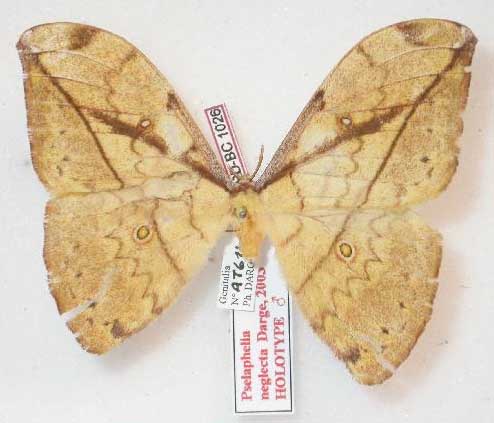
Pselaphelia neglecta male, 73mm, BOLD Systems.
This site has been created by
Bill Oehlke at oehlkew@islandtelecom.com
Comments, suggestions and/or additional information are welcomed by Bill.
| TAXONOMY:
Superfamily: Bombycoidea Latreille, 1802
Family: Saturniidae Boisduval, [1837] 1834
Subfamily: Saturniinae Boisduval, [1837] 1834
Tribe: Urotini, Packard, 1902
Genus: Pselaphelia, Aurivillius, 1904
| |
MIDI MUSIC
"Moon River"
copyright C. Odenkirk
MIDI CITYON.OFF
<bgsound src="moon.mid" LOOP=FOREVER>
|
DISTRIBUTION:
Pselaphelia neglecta
(wingspan: males: 73-80mm; females: 80mm)
flies in
south central Ivory Coast;
Guinea Conakry (BOLD);
Gabon; and
Equatorial Guinea.
If my identification of Alain Coache's female specimen is correct, it also flies in Benin.
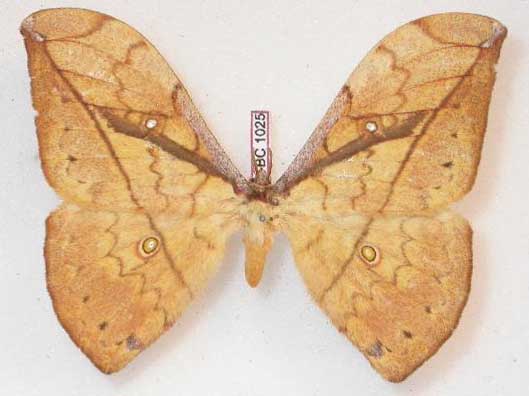
Pselaphelia neglecta male, 80mm, BOLD Systems.
The general colour of the body and wings is a dull yellowish-grey or greyish-yellow, with a generous speckling of scattered reddish-grey scales.
Visit Pselaphelia Comparison Plate for identification purposes.

Pselaphelia neglecta male, 80mm, BOLD Systems.
The forewing is less produced than in other species, and the apex is rounded and the wing greatly curved along the costa.

Pselaphelia neglecta male, 73mm, BOLD Systems.
The cell is small and rounded and the small "point of light" is oval,
ringed with fine grey-brown and surrounded by a wider ring of red.
The well defined transverse line is grey-brown but not as full as in
laclosi. The outer line is equally well marked and is only slightly
and evenly curved. There are some dark spots (variable)
near the bottom of the submarginal area.
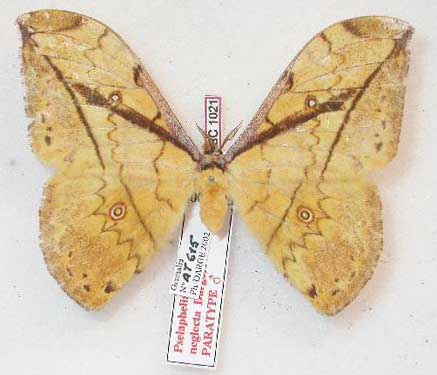
Pselaphelia neglecta male, 76mm, BOLD Systems.
The hindwing cell is small, slightly oval, with a tiny point of light
surrounded by bright orangey-yellow encircled with a thin black ring
bordered by pale yellow and then diffuse rose.
As in the forewing, there are some dark spots in the marginal area, especially
near the anal angle.
FLIGHT TIMES AND PREFERRED FOOD PLANTS:
Specimens have been taken in April and June.
The Pselaphelia neglecta larval host is unknown.
ECLOSION:
Adults eclose from subterranean pupae.

Pselaphelia neglecta, BOLD Systems.
SCENTING AND MATING:
Pselaphelia neglecta
females emit an airbourne pheromone and males use their highly
developed antennae to track the scent plume at night to locate the
calling females.
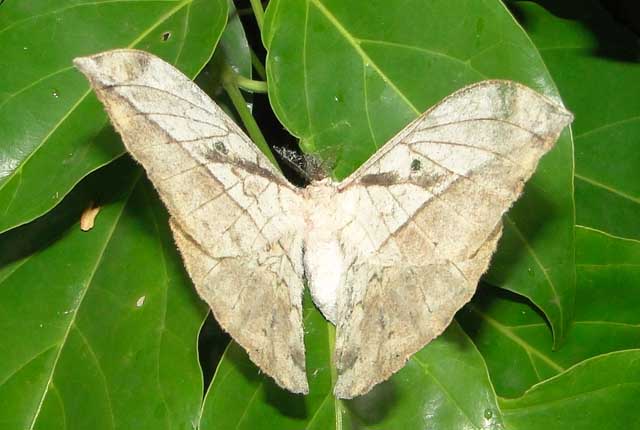
Pselaphelia neglecta, Benin, courtesy/copyright of Alain Coache,
tentative id by Bill Oehlke.
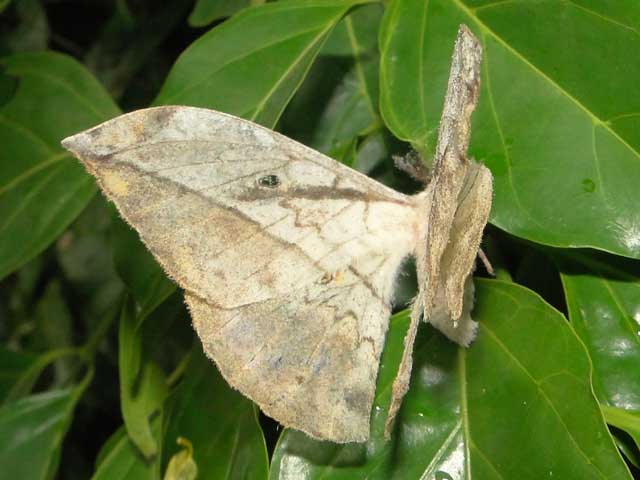
Pselaphelia neglecta, Benin, courtesy/copyright of Alain Coache,
tentative id by Bill Oehlke.

Pselaphelia neglecta female, 80mm, on my home computer only.
EGGS, CATERPILLARS AND PUPAE:
Mature larvae leave the host plant to excavate tunnels into the
earth. Pupation is in a subterranean chamber.
Larval Food Plants
It is hoped that this
alphabetical listing followed by the common name of the foodplant will
prove useful. The list is not exhaustive. Experimenting with closely
related foodplants is worthwhile.
Return to Pselaphelia Index
Return to Main Index
The pronunciation of scientific names is troublesome for many. The "suggestion" at the top of the page is
merely a suggestion. It is based on commonly accepted English pronunciation of Greek names and/or some
fairly well accepted "rules" for latinized scientific names.
The suggested pronunciations, on this page and on other pages, are primarily put forward to assist those who hear with internal ears as they read.
There are many collectors from different countries whose intonations and accents would be different.
I do not know the source of Pselaphelia, but it may have something to do with the dark bar (shadow) passing below
the cell in the type species gemmifera. Aphelia is the point on the orbit of a celestial body that is
farthest from the sun; I think "psel" is associated with 'shadow'.
The species name neglecta may indicate the species
has been overlooked.








